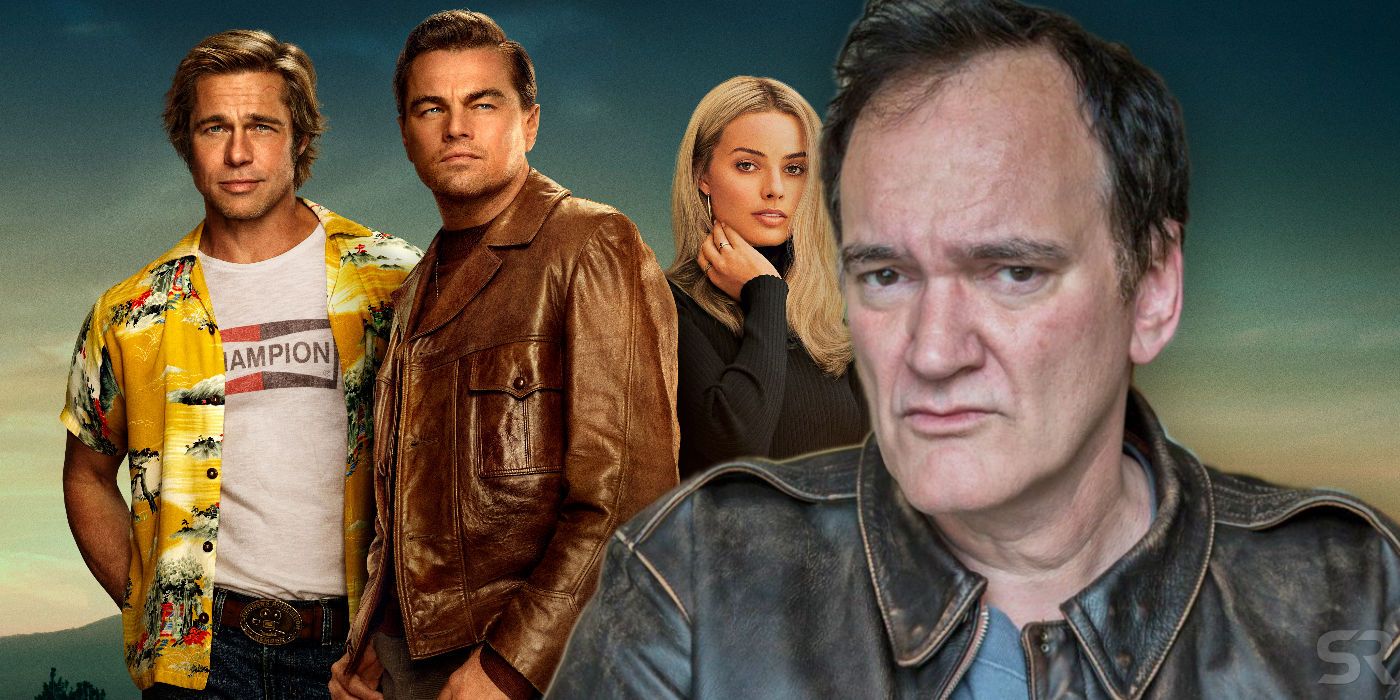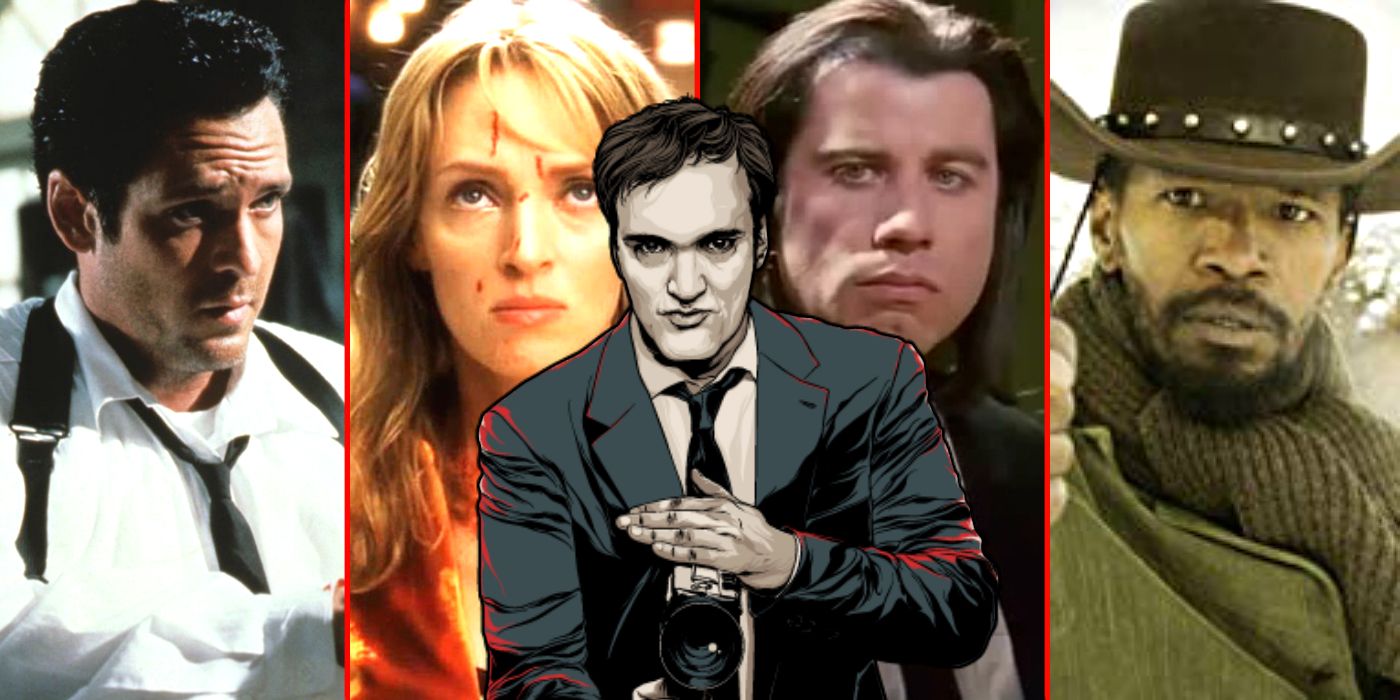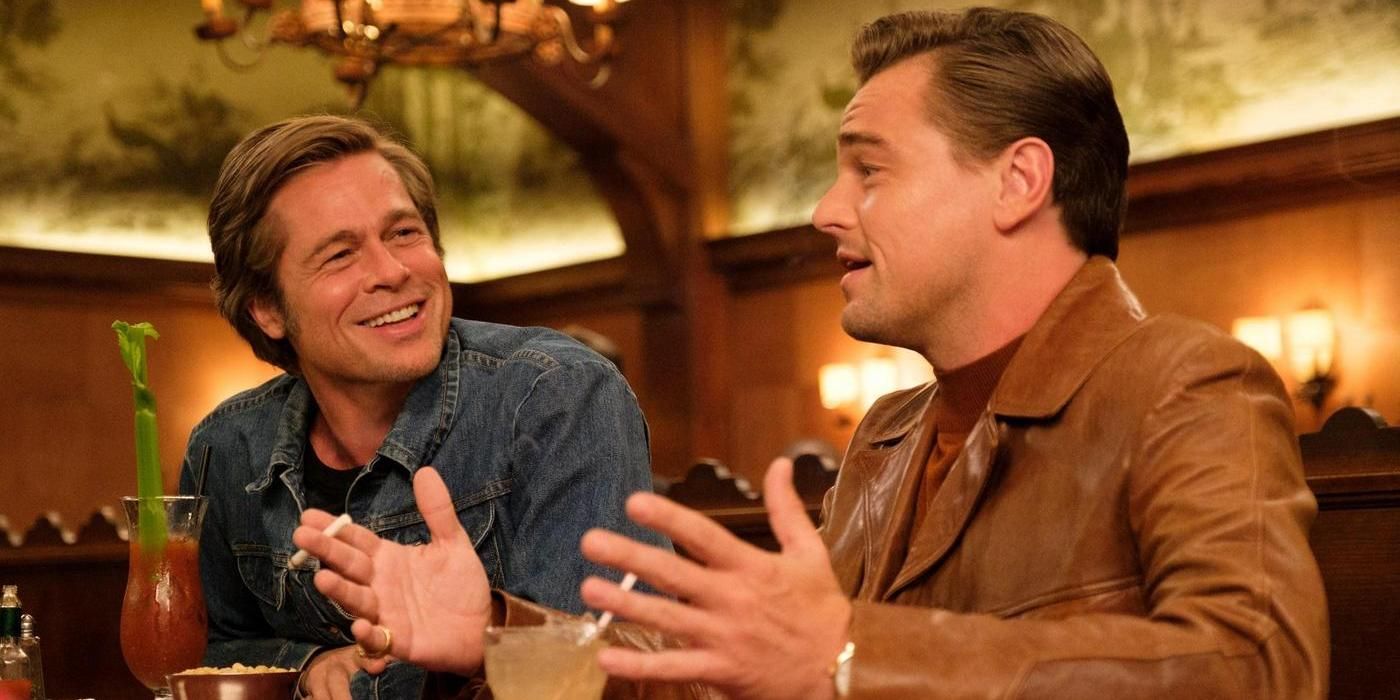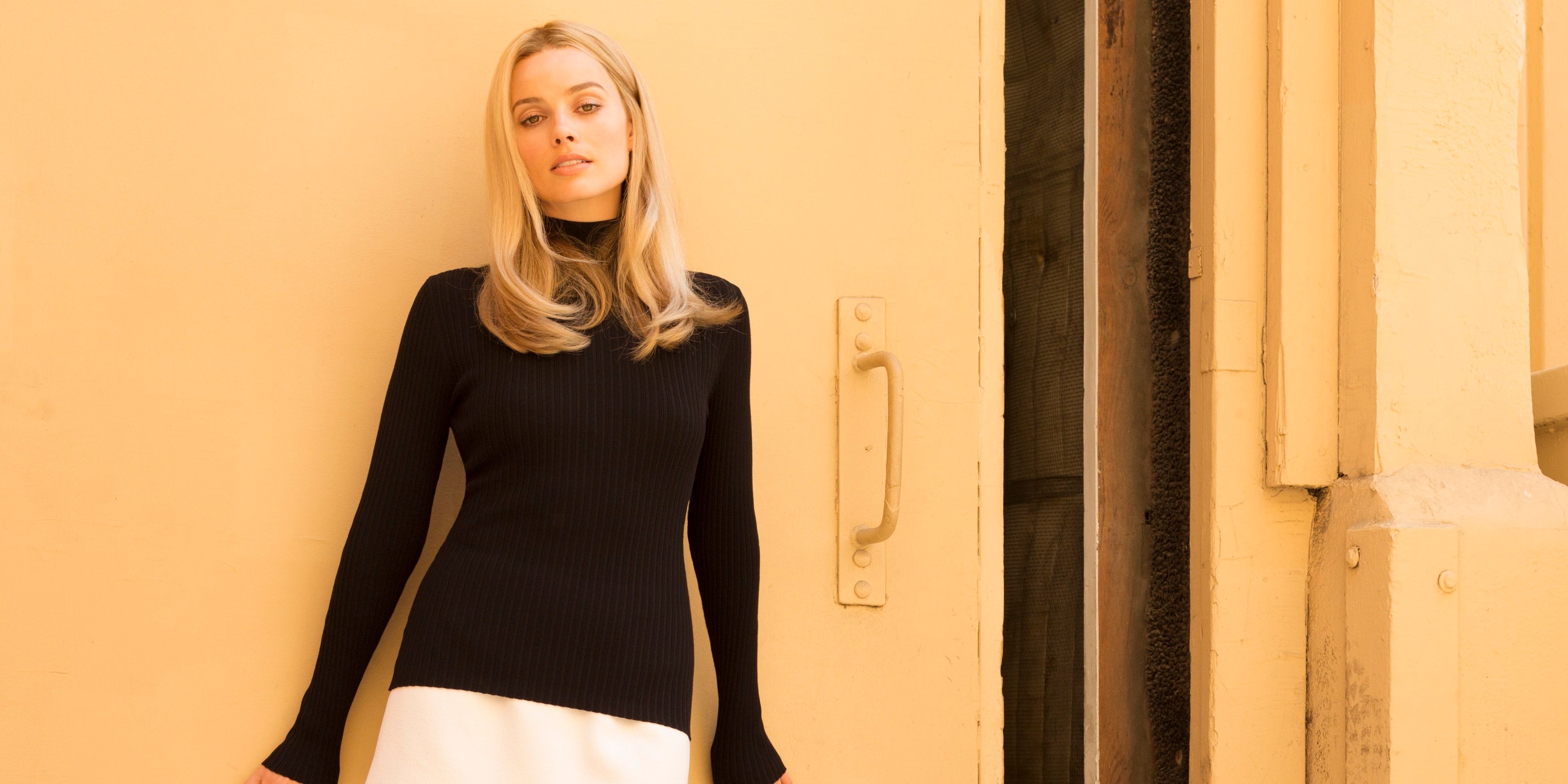Warning: SPOILERS ahead for Once Upon a Time in Hollywood.
With Once Upon a Time in Hollywood, Quentin Tarantino breaks from tradition and focuses more on cohesive storytelling than trademark aesthetics. He approaches each sequence like a short film; the pacing is impeccable, the performances are spot-on. Everything comes together.
For Once Upon a Time in Hollywood’s story, Tarantino reworked one of America’s most disturbing true crimes and made it his own. He contrasts the fictional stories of actor Rick Dalton (Leonardo DiCaprio) and stuntman Cliff Booth (Brad Pitt) with the real-life Los Angeles experiences of actress Sharon Tate (Margot Robbie). Rather than simply recreate the tragic Tate murders, in which three Manson Family members killed Tate and four others at her and Roman Polanski’s Cielo Drive home, Tarantino presents an alternative sequence of events; a cerebral commentary about Hollywood history, celebrity culture, and movie industry myths.
Unsurprisingly, Tarantino’s latest film has inspired intense conversations about the historical subject matter, and his career as a whole. But what's interesting is that Once Upon a Time in Hollywood is one of the filmmaker's most unique movies, because it's so different from what's come before. Here’s why Once Upon a Time in Hollywood is so effective.
What Defines A Tarantino Movie
For nearly 30 years, Tarantino’s movies have been full of stylized violence, clever dialogue, and pop culture references. In 1992, he set the tone with Reservoirs Dogs, a gritty L.A. heist film with an unorthodox narrative structure. Tarantino literally and figuratively establishes his cinematic voice, as the film begins with Tarantino himself (as Mr. Brown) delivering a now-iconic monologue. Reservoirs Dogs inspired a new generation of filmmakers, and preceded one of the most influential films of the ‘90s, Pulp Fiction, which displays all the classic trademarks of Tarantino films.
Like Reservoir Dogs, Pulp Fiction features a non-linear narrative, as gangster Vincent Vega (John Travolta) and Jules Winnfield (Samuel L. Jackson) attempt to retrieve a mysterious briefcase for their boss, Marsellus Wallace (Ving Rhames). The violence is extreme. The characters are stylish. The dialogue is slick. Pulp Fiction forever changed pop culture and strengthened Tarantino’s brand as a filmmaker. But then he released Jackie Brown, a film that strayed from his structural formula and didn’t quite become a pop culture sensation, or even a huge box office hit. From that point forward, Tarantino went back to the template established by his first two features. Kill Bill includes all the mayhem that fans expected.
Aside from Inglourious Basterds, Tarantino’s movies from 2007 to 2015 aren't necessarily regarded as classics. Fans and critics alike recognized that he might have been trying to be too edgy, whether it’s the rampant use of racial slurs in Django Unchained or The Hateful Eight's ultra violence. By now, everybody knows what fuels a Tarantino film. But Once Upon a Time in Hollywood highlights a more mature filmmaker, one who seems more comfortable with his creative vision, and more fully in command of his craft.
How Once Upon A Time In Hollywood Is Different
Much like Jackie Brown, Once Upon a Time in Hollywood has a smooth, linear storyline. Tarantino doesn’t seem interested in flexing for the audience. Instead, he takes his time with each sequence. Tarantino immediately presents Rick Dalton as a sympathetic figure, someone who audiences can truly root for. Some viewers may expect a story that's fundamentally about the Manson murders, but Once Upon a Time in Hollywood's actual plot is subtly established during an early restaurant scene. Rick comes to the realization that he’s no longer relevant and must overcome his insecurities. Tarantino then immerses viewers into Rick's world. Suddenly, Once Upon a Time in Hollywood becomes so much more, but it’s ultimately about Rick’s internal conflict as well as his universally relatable, emotional struggles.
With Once Upon a Time in Hollywood, Tarantino slows down. There’s a lesson to be learned with each sequence. Rather than splattering the screen with blood, and peppering each scene with oh-so-clever dialogue, Tarantino efficiently develops his characters. Many sequences conclude with an overhead shot; a moment of reflection for the audience. Tarantino does indeed use flashbacks in Once Upon a Time in Hollywood, but they typically underline the psychology associated with Rick and Cliff, and especially their friendship. The actor struggles with what might’ve been (a lead role in The Great Escape); the stuntman struggles with the public perception that he killed his wife. Both men are flawed individuals who present a specific image but try to change with the times, all the while staying true to their core beliefs.
Tarantino prioritizes tension over violence. He saves the most gory moments for the end. Up until the brilliantly-executed Spahn Ranch sequence, Once Upon a Time in Hollywood is mostly devoid of blood. By fully developing the main characters, Tarantino preps the audience for the inevitable conflict with the Manson Family. The wants and needs are clearly established. As for Tate, Tarantino wisely doesn’t make her an archetypal "Tarantino character". Meaning, he leans mostly on the fact that Tate was an up-and-coming actress who felt optimistic about the future. Robbie receives little dialogue because anything else would've been detrimental to the portrayal of her character, a real-life murder victim. So, the snappy one-liners are saved for Rick and Cliff, along with all the other fictional characters. Once Upon a Time in Hollywood’s shocking ending is symbolic of Tarantino’s entire thematic approach, as he prioritizes psychology first and foremost. One can hear all the horror of what really happened on Cielo Drive. But through a simple and fictional twist of fate, Tarantino redirects the violence towards the Manson Family.
Why Once Upon A Time In Hollywood's Story Still Works
Once Upon a Time in Hollywood’s ending works on numerous levels. For one, it provides a cathartic ending for those who are familiar with the real-life events. In Tarantino's tale, Tate and her friends live; the Manson Family members are punished for their actions. Tarantino includes his trademark violence but takes an empathetic approach with his alternate history. Nothing changes in real life, of course, but that’s what the movies are for: a brief escape from reality.
In terms of storytelling, Rick and Cliff do indeed save the day in Once Upon a Time in Hollywood. There’s a bizarre, feel-good conclusion that only Tarantino could provide. Rick finds the professional connections that he’s looking for, while Cliff proves that he’s still in peak physical form, even during an acid trip. Furthermore, Rick and Cliff's experience that night seems to suggest that they'll continue to work with each other given that Rick's career could be resurrected thanks to meeting Sharon Tate and eventually her husband, Roman Polanski. Plus, for the pool scene, Tarantino brings the narrative full circle, as the inciting incident (the restaurant scene with Al Pacino) includes a passing reference to Rick's flamethrower.
Overall, Tarantino weaves together a believable story with Once Upon a Time in Hollywood. It’s grounded in Los Angeles facts, and the attention to detail is meticulous. Rick embodies the traits of numerous real-life actors who struggled to change with the times. Tarantino doesn’t over-fantasize the storyline, nor does he attempt to create an imagined version of Hollywood. Tarantino sparks a conversation that will be continued for years to come, whether it’s about celebrity/gossip culture, the movie industry, or the depiction of mental illness.
Once Upon a Time in Hollywood challenges the audience to consider different perspectives. Tarantino includes Hollywood lore to imply certain information, but without stating it as fact. Younger viewers will have a different experience if they’re not somewhat familiar with the Manson Family murders. And the ambiguous nature of Cliff’s backstory allows for different interpretations about his character. Because Tarantino use historical events as a backdrop for a story about fictional individuals, the audience can have different experience with each viewing, based on how ambiguous moments are interpreted. Once Upon a Time in Hollywood is part truth and part fiction; a crazy/beautiful cinematic contradiction.




